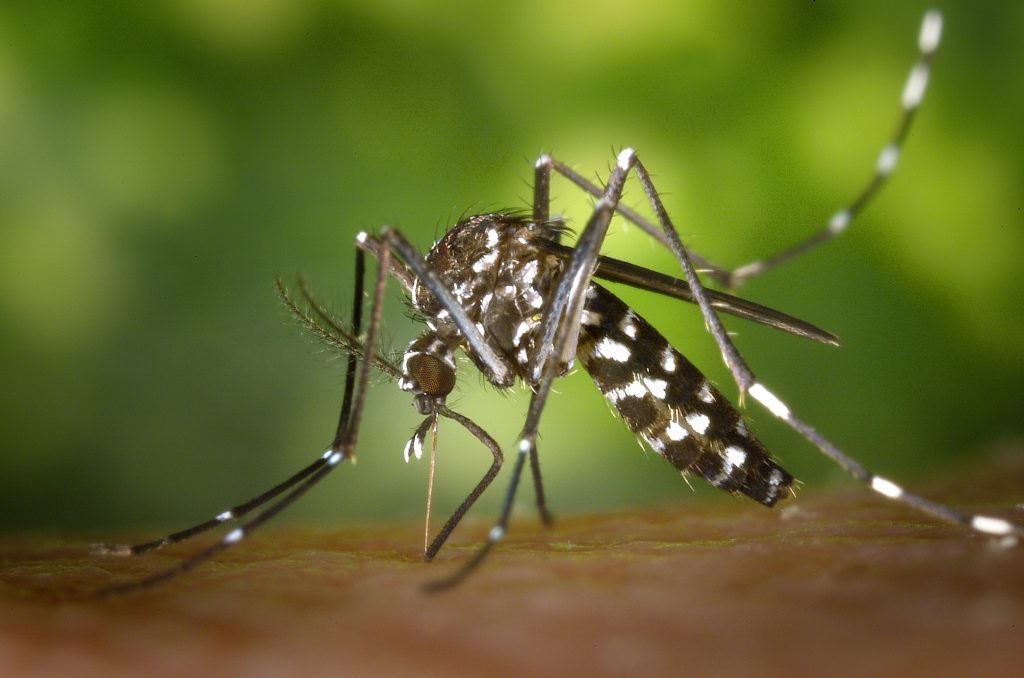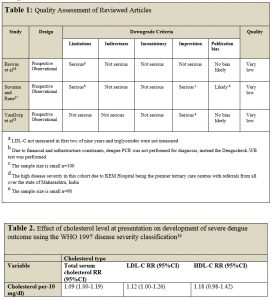Lipid Profile Changes as a Potential Prognostic Marker for the Prediction of Dengue Fever Severity in Pediatric Patients
Abstract
Background: Dengue fever (DF) remains the most rapidly spreading mosquito-borne viral disease worldwide, and in recent decades a re-emergence of the virus and its severe forms has been observed. DF can present in a wide spectrum of manifestations ranging from self-limited DF, to severe forms such as dengue hemorrhagic fever (DHF) and dengue shock syndrome (DSS). Certain elements of the lipid profile may aid early prognostication in patients at risk for severe types of dengue. The primary goal of this literature review is to address whether lipid profile changes can be utilized to predict development of dengue fever severity in pediatric patients.
Methods: An exhaustive search of available literature was conducted using MEDLINE-Ovid, Web of Science, CINAHL, and Google Scholar using the keywords: lipoprotein, lipid profile, and dengue fever. Studies were included if the primary data evaluated lipid profile changes in the pediatric population and their correlation with severe outcomes of DF. Bibliographies were also searched for relevant studies. Articles were excluded if studies were conducted on adult patients. Relevant articles were assessed for quality using the GRADE.
Results: Three studies fit the inclusion criteria and were included in this systematic review. All studies were observational prospective studies looking at the relationship between lipid profile alterations with severe forms of dengue infection. Decreases in total cholesterol (TC) and LDL levels were statistically significant. Other lipid profile components, such as HDL, VLDL and triglycerides, did not have a significant change with increasing dengue severity.
Conclusion: Studies demonstrated that specific changes in the lipid profile can anticipate development of severe forms of dengue fever in pediatric patients. Total cholesterol and LDL measurements were consistently lower in association with DHF and DSS. However, TC and LDL’s sole use as prognostic biomarkers for increased dengue severity is premature and inconclusive. While a great starting point for more research, more studies involving time-ordered analysis and uniform measurements are needed to effectively and accurately predict progression to severe forms of dengue.
Keywords: Dengue fever, lipid profile, lipoprotein, pediatric
(Click on image to enlarge.)
REVIEWED STUDIES:
Biswas HH, Gordon A, Nunez A, Perez MA, Balmaseda A, Harris E. Lower low-density lipoprotein cholesterol levels are associated with severe dengue outcome. PLoS Negl Trop Dis. 2015;9(9): doi: 10.1371/journal.pntd.0003904
Suvarna JC, Rane PP. Serum lipid profile: a predictor of clinical outcome in dengue infection. Trop Med Int Health. 2009; 14:576-585.
van Gorp ECM, Suharti C, Mairuhu AT a, Dolmans WM V, van der Ven J, Demacker PN, van der Meer JW. Changes in plasma lipid profile as a potential predictor of clinical outcome in dengue hemorrhagic fever. Clin Infect Dis. 2002; 34:1150-1153.
AUTHOR: Alia Chuck graduated from Pacific University, School of PA Studies in August 2017.


